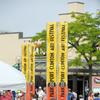Bonhams to Sell White Gold: One of the Finest Collections of Meissen in the World
- LONDON, United Kingdom
- /
- November 23, 2009
The preferred gifts of kings, Meissen porcelain, from many of the noble houses of Europe, will be sold at Bonhams on November 25 2009 when the first part of the Hoffmeister Collection is auctioned.
The world-famous Hoffmeister Collection was assembled over the last 40 years by two German brothers who have a passion for this rare 18th-century porcelain. Considered one of the finest collections of Meissen in the world, for the past ten years it has been on view at the Museum für Kunst und Gewerbe in Hamburg, one of Europe's leading museums of applied arts. Bonhams will sell the collection in three sales, the first this year in November and two subsequent sales next year.
The Hoffmeister Collection is a survey of the decoration of Meissen porcelain during the first 50 years of the manufactory's existence, when Meissen dominated the taste for porcelain across Europe. It illustrates the quality and variety of the oldest porcelain manufactory in Europe. The collection includes the largest and most important group of 18th-century Meissen armorial porcelain anywhere in the world. The provenance of many pieces is equally distinguished, with examples formerly owned by some of the greatest collectors of the last 150 years, such as Maurice de Rothschild, Ludwig von Darmstaedter and Erich von Goldschmidt-Rothschild.
Sebastian Kuhn, European Ceramics Senior Specialist at Bonhams, says: "It would no longer be possible to assemble such a broad-ranging collection of this quality and condition; and some of the pieces are of such rarity that comparable examples are unlikely ever to appear again on the market."
Featured in the collection are items made for kings, tsars and popes:
Augustus the Strong, Elector of Saxony and King of Poland
The founder and owner of the Meissen factory was also its biggest customer. He suffered from the 'maladie de porcelaine', and assembled a vast collection of Chinese and Japanese porcelain, as well as, from 1710, Meissen from his own factory. He is famously said to have traded a real regiment of Saxon soldiers for a set of Chinese vases with the king of Prussia. Augustus conceived a magnificent "porcelain palace" to house his collection on the bank of the Elbe river in Dresden. The Hoffmeister collection includes numerous pieces marked with inventory numbers from this palace, which can be traced to the surviving inventories of the 18th century.
Friedrich August, Elector of Saxony and King of Poland
Augustus the Strong's son also ordered considerable quantities of porcelain from Meissen. The Hoffmeister collection includes an example from the 'Yellow Hunting Service', made for the Japanese Palace in Dresden in 1734. The service was still in use in the 1770s – an inventory of the time records "During a dinner in honour of His Majesty, the King of Prussia, held on 2nd September 1777, one of the 39 plates was broken."
King Frederick the Great of Prussia
The Prussian king loved porcelain, and when Prussian forces invaded Saxony during the Seven Years War and Meissen was occupied, he took vast quantities of porcelain for himself and his officers. He even took up residence at Meissen and was personally involved in designing several services for himself and his favourites. The collection includes several examples from services made for Frederick for his royal palaces in Berlin and Potsdam, some of which he later gave to his generals.
Europe's Leading Royals
Reflecting the great importance and value attached to Meissen porcelain in the 18th century, there are also samples of services belonging to the Electress of Hanover, Sophie von der Pfalz (1630-1714) (Mother of King George I); King Louis XV of France (1710-1774) and Maria Leszczynska (1703-1768); Empress Elizabeth of Russia (1709-1761); Clemens August of Bavaria, Elector of Cologne (1700-1761); King Christian VI of Denmark (1699-1746); Queen Ulrika Eleonora of Sweden (1688-1741); Friedrich August II., Elector of Saxony and (as Augustus III) King of Poland and Lithuania (1696-1763); Pope Benedict XIV (1675-1758); Don Carlos de Borbón, King of the Two Sicilies (1716-1788) and Maria Amalia Christiana of Saxony (1724-1760)
The Collection features many items with the arms of Venetian nobility – porcelain that would have graced many of the palaces on The Grand Canal. Other pieces were made for German, French and British nobility, including the future Duke and Duchess of Leinster and probably for Joseph Smith, English Consul in Venice in the mid 18th century, also a famous art collector and dealer.
Each buyer will receive a copy of the lavish three-volume book on the collection by Dieter Hoffmeister.
Enquiries on 0870 0273622
For more information please contact Francesca Tarrant or Rosie Kempson at The Communication Group on 0207 630 1411 or email ftarrant@thecommunicationgroup.co.uk / rkempson@thecommunicationgroup.co.uk
NOTES TO EDITORS
MEISSEN
The Meissen porcelain factory was founded in 1710 by Augustus the Strong, Elector of Saxony and King of Poland in a castle in the town of Meissen, near the Electoral Residence in Dresden. The Chinese secret of porcelain manufacture – the Arcanum – had been avidly sought by Europeans since the first examples of Chinese porcelain were brought to Europe. Porcelain was thought to have mysterious and precious qualities: it was highly prized and collected by European princes, who began in the early 18th century to exhibit their "white gold" in special porcelain rooms or "cabinets".
Once he possessed the secret of the manufacture of porcelain, Augustus the Strong developed plans for an entire palace to be filled with porcelain. Visitors would enter the ground floor filled with thousands of pieces of his Chinese and Japanese porcelain, before proceeding to the upper floor, where his Meissen would be displayed. Visitors would enter a long room filled with a menagerie of hundreds of porcelain animals – some almost life-sized – before proceeding through six state rooms, each completely filled with hundreds of pieces of Meissen porcelain of a different colour. From here, the visitor would enter the throne room of the Elector/King himself.
This magnificent porcelain palace was of an unprecedented scale and complexity: it was a demonstration not only of his refined taste and love of porcelain, but also of his wealth and power. The palace was intended to show the superiority of his Meissen porcelain over the Chinese and Japanese, and by implication - as the only European ruler to possess the secret of porcelain – as a demonstration of his political ambitions. Meissen porcelain was prized not only for its quality, value and beauty, but was also a symbol of political power.
Augustus the Strong died before his ambitious plans could be completed, but his porcelain factory went on to dominate European taste for porcelain until the middle of the 18th century. Countless styles of decoration were developed that reflected and led the taste of European courts in the 18th century: from the Orient and the exotic, to European subjects and court life, Baroque ornament to the Rococo. Meissen porcelain was largely the prerogative of the aristocracy and was so highly-valued that it was given as gifts to kings, princes and ambassadors. Even ostensibly functional items, such as tea, coffee and chocolate sets, were, at least during the first decades of production, probably too precious for use and were costly objects to be displayed and admired.
It was only with the Seven Years War (1756-63) that the Meissen porcelain factory lost its dominance in European courts. The ravages of war, a shift in taste to French styles of decoration, and a host of other factories across Europe, all took their toll on the factory. It survived and revived, however, and continues to the present day: the first and oldest European porcelain factory.
For further press information please contact Julian Roup on 0207 468 8259 or julian.roup@bonhams.com or press@bonhams.com
http://www.bonhams.com
About Bonhams
Bonhams, founded in 1793, is one of the world's oldest and largest auctioneers of fine art and antiques. The present company was formed by the merger in November 2001 of Bonhams & Brooks and Phillips Son and Neale UK. In August 2002, the company acquired Butterfields, the principal firm of auctioneers on the West Coast of America and in August 2003, Goodmans, a leading Australian fine art and antiques auctioneer with salerooms in Sydney, joined the Bonhams Group of Companies. Today, Bonhams offers more sales than any of its rivals, through two major salerooms in London: New Bond Street, and Knightsbridge, and a further seven throughout the UK. Sales are also held in San Francisco, Los Angeles, New York and Boston in the USA; and Switzerland, France, Monaco, Australia, Hong Kong and Dubai. Bonhams has a worldwide network of offices and regional representatives in 25 countries offering sales advice and valuation services in 57 specialist areas. For a full listing of upcoming sales, plus details of Bonhams specialist departments, go to www.bonhams.com. (01-08) For other press releases, go to www.bonhams.com/press.

















100x100_c.jpg)



